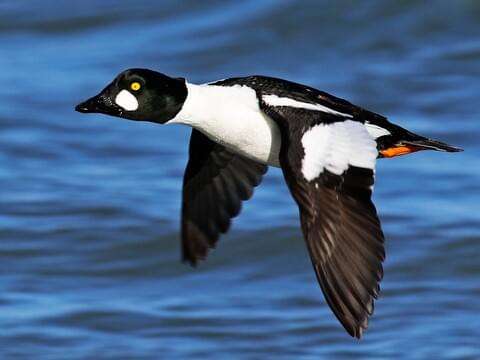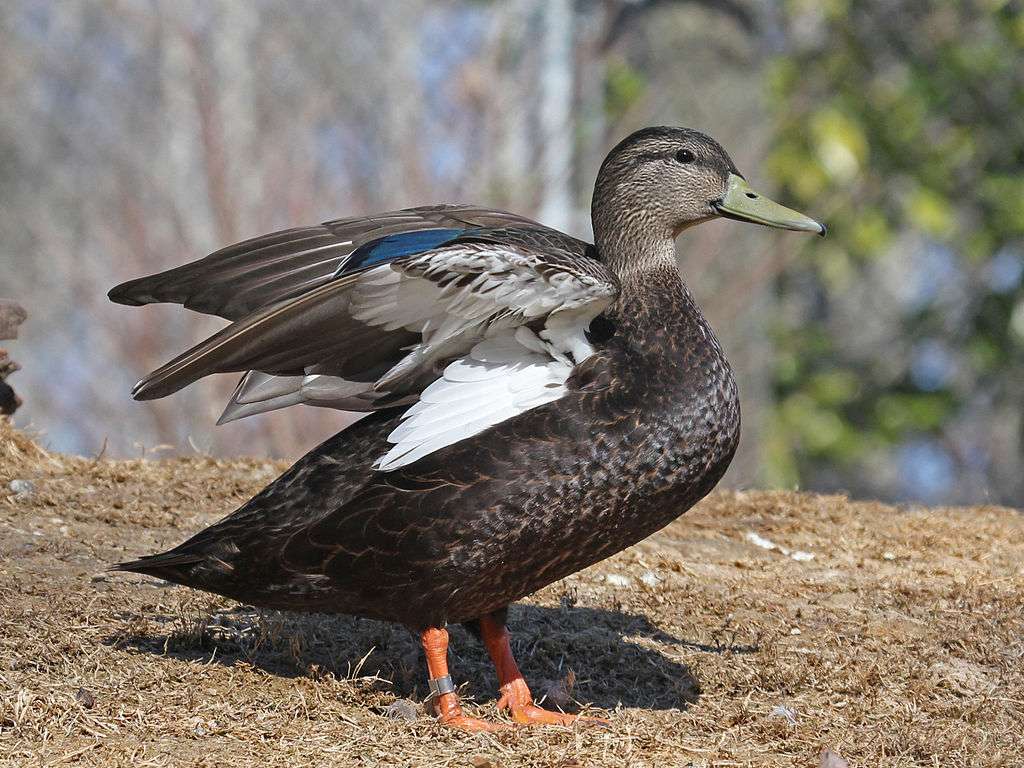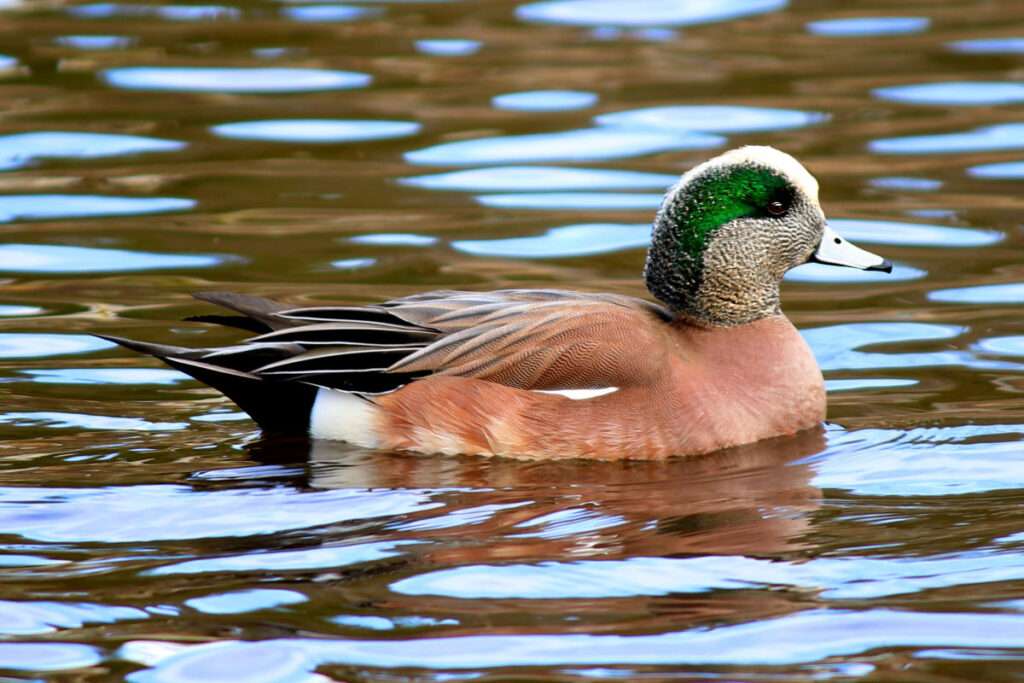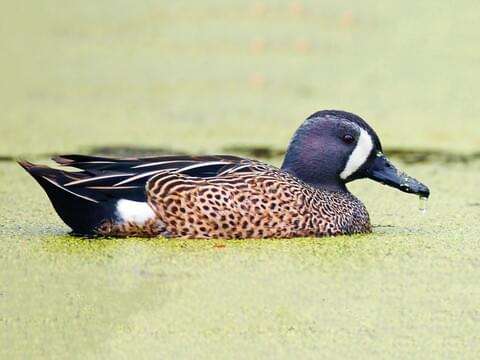
The name of the genus comes from the Greek word boukephalos, which translates to “bullheaded” and alludes to the elongated head of the bufflehead.
Fun Facts
- When ducklings leave the nest, they lose the ability to recognize their mother and may join the brood of another female. When two adult females engage in a territorial quarrel, their young may be dispersed and confused with one another.
- The Common Goldeneye builds its nest in holes dug by Pileated Woodpeckers or in natural cavities in living or dead trees. The highest nest cavity ever discovered was 43 feet above the surface.
Description
Similar to the Barrow’s goldeneye, the common goldeneye gets its name from its dazzling yellow iris. Small flocks of common goldeneyes fly together while making a characteristic whistle with each wing beat. Male common goldeneyes have a white circular patch between the eye and the base of the bill on their darkish iridescent green heads. White patches can be seen on the belly, flanks, secondary wing coverts, and secondaries. The legs and feet are yellowish, and the bill is black. Female common goldeneyes have whitish neckbands, specked gray backs and sides, and chocolate brown heads. The middle five secondary colors are white, while the upper wings are brownish-black.

Predators
Humans go goldeneye hunting. In their breeding habitats, hawks, owls, eagles, and raccoons prey on females and young.
Diet
Varies depending on the environment and the season. Eats a variety of crustaceans, such as crayfish, crabs, shrimp, and amphipods. It also consumes mollusks, small fish, marine worms, frogs, and leeches. In summer, the main food source is aquatic insects (when lakes with no fish may be preferred). Additionally consumes certain plant matter, particularly in the fall, like pond weeds.
Habitat
Forested lakes and rivers, as well as salty bays and seashores in the winter. In the mating season, huge trees near crystal-clear, chilly water—such as those found near northern lakes, bogs, and rivers—are necessary for nesting cavities. Mostly on protected, shallow bays and estuaries during the winter, as well as on rivers and lakes.
As Pet
There is no denying the fact that these birds appear to be quite cute. They do not, however, ever make a nice pet. They prefer to live in the wild and make significant efforts to limit their contact with people.
Table





